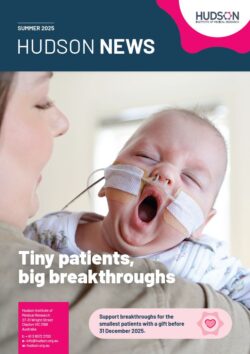Professor Brendan Jenkins, NHMRC Senior Research Fellow
- Honorary Fellow
Professor Brendan Jenkins is a member of the Centre for Innate Immunity and Infectious Diseases.

Biography
Professor Brendan Jenkins completed his PhD studies at the Hanson Institute in Adelaide, before undertaking postdoctoral research at the world-renowned Fred Hutchinson Cancer Research Center in Seattle, USA, and later the Ludwig Institute for Cancer Research in Melbourne. In 2006, he established his own research group at Hudson Institute of Medical Research. He has continued to be at the forefront of research examining the roles cytokines and pattern recognition receptors (such as Toll-like receptors) play in human disease, namely cancer of the stomach (gastric cancer, the second most lethal cancer worldwide) and chronic inflammation (peritonitis, arthritis).
More recently, he has further expanded his research to include lung cancer (the most common and lethal cancer in the world) and emphysema/chronic obstructive pulmonary disease (COPD). Collectively, his research programs incorporate long-standing collaborations with basic scientific researchers, industry and clinicians, both nationwide and overseas (UK, Japan, Singapore, Europe). Amongst his scientific achievements are publications in the highest-ranking science and medical research journals, including Cancer Cell, Nature Medicine, Nature, Immunity, Journal of Clinical Investigation, Oncogene, Proceedings of the National Academy of Sciences USA, Blood, Molecular and Cellular Biology and Journal of Immunology.
In recognition of his research achievements, Professor Jenkins has held numerous fellowships (NHMRC RD Wright Postdoctoral Research Fellowship, Monash University Fellowship, Sylvia and Charles Viertel Senior Medical Research Fellowship, and currently an NHMRC Senior Research Fellowship (2014-2023)), and has also received many national and international awards, including the Australian Institute for Policy and Science Tall Poppy Award. In addition, he has been awarded multiple project grants within Australia (NHMRC, Cancer Council) and overseas (Association for International Cancer Research), and is a regular invited speaker at local and international scientific meetings.
Publication highlights


